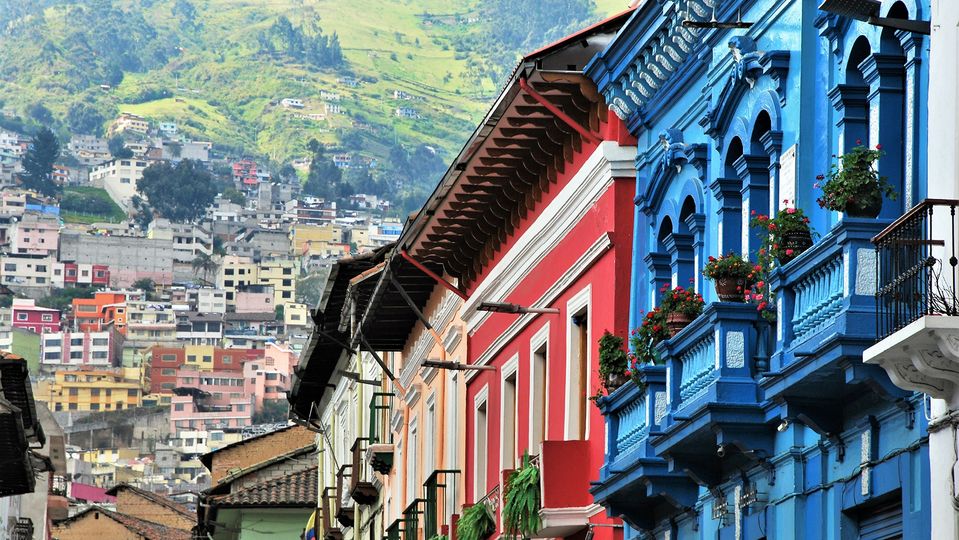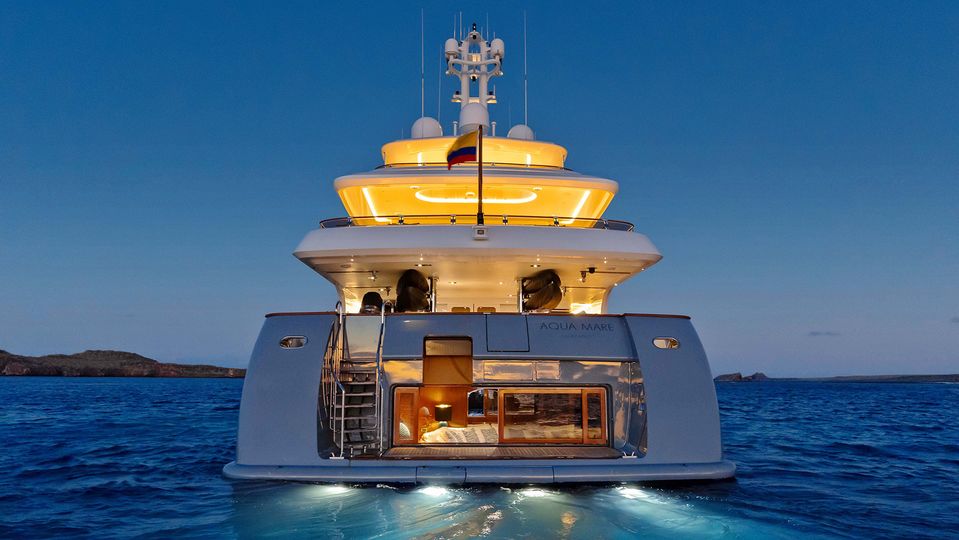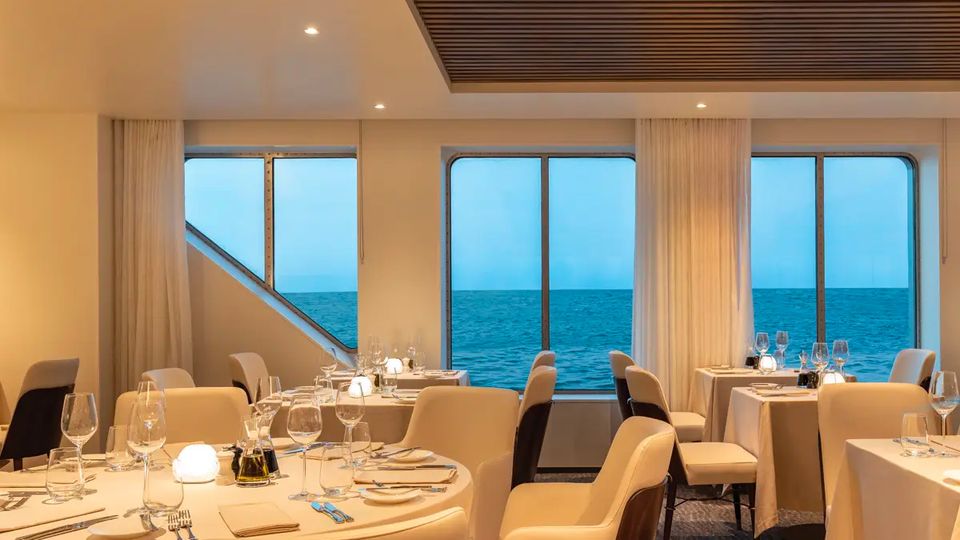Islands of wonder: exploring the remote Galapagos in style
This UNESCO listed paradise is brimming with unique sights, and how you choose to explore is an important decision.

Charles Darwin described the Galapagos as ‘a little world within itself’. When you consider the unique plants and animals calling it home, not to mention the alien landscape of stark hills leading to orange sands and waters of emerald green and blue, you can see why.
To visit the archipelago is to explore a remote outpost which has evolved with almost no human interaction – a natural secret some 1,400kms off the coast of Ecuador. Even getting there today is a significant undertaking, particularly for Australians.
While direct flights would be nice, the simplest option is jetting from Sydney to Santiago de Chile (Qantas and LATAM both offer regular services), before continuing to Quito or Guayaquil in Ecuador, and then hopping on a flight bound for San Cristobal or Baltra.
With this in mind, it’s a good idea to tack the Galapagos onto a longer Ecuador trip. The narrow streets and Spanish colonial architecture of Quito’s old town are worth seeking out, while the locals too will leave lasting impressions.
Regular flights to San Cristobal and Baltra are offered by LATAM and Avianca, and it takes less than an hour to reach them. You’re also treated to some pretty impressive views on the way.
Once you touch down, the type of holiday you seek – be it a bespoke superyacht cruise, guided tour or simply taking each day as it comes with no set itinerary – dictates your next move.
Here are some of the best ways to explore the Galapagos islands.
Cruise around the islands
With 13 main islands and numerous islets to discover, cruising around the Galapagos makes sense. Rather than taking a creaking sailing ship like Darwin and his companions did back in 1835, there are some infinitely more indulgent options to choose from.
Among the more premium offerings is Aqua Expeditions, which makes island hopping a breeze on its stunning 50-metre ‘Aqua Mare’ super yacht.
More than just sailing, there are ample opportunities to get your land legs on hiking expeditions too, not to mention explore by kayak, stand up paddle board or private tender.
No detail is overlooked onboard, with seven immaculate cabins adorned in rich walnut-veneer panels, luxury linens and beautiful 17th century prints of local wildlife.
A 1:1 crew to guest ratio and two naturalist guides ensure you get the finest experience, not to mention some sensational cuisine.
Silversea also offers a dedicated ship in the Galapagos, the Silver Origin, catering to a max of 100 guests and boasting eight zodiacs for daily wildlife spotting. Shore excursions and premium dining and beverages are all included – all you need to do is relax.
If you’re in the mood for a dive-oriented liveaboard cruise, consider Galapagos Sky – easily holding its own among the most luxurious vessels in the region – or the mid-range Humboldt Explorer, which unlocks up to 15 dives over its popular seven-night itinerary.
And what is there to see? Think schools of majestic hammerheads, encounters with whale sharks and mantas, plus more penguins and sea lions than you’ve ever seen in one place.
Follow the (tour) leader
Whether you’re hoping to seek out blue-footed boobies or marine iguanas, delve into the history of Darwin’s expedition, or traverse the volcanic landscape of Punta Espinosa, a Galapagos guided tour helps bring destinations to life.
Intrepid operates several itineraries from Quito, including its 10 day ‘Classic Galapagos: Central Southern Islands’ featuring the custom-built Grand Queen Beatriz, and the 10 day ‘Ultimate Galapagos: Central Islands’ on the Grand Daphne, which launched in 2021.
Also worth a look is G Adventures, which sees travellers embark on cruises aboard its boats Reina Silvia Voyager or the Yolita, with naturalist guides on hand to help you discover rare animals, together with landscapes that are, in a word, captivating.
Throughout their trips, you’ll get a chance to spot iguanas and flamingos on the green and white-sand beaches of Punta Cormorant, snorkel amid a rainbow of marine life in Punta Vicente Roca, and a whole lot more.
Slow and steady wins the race
Although tours and cruises are the most popular ways of seeing the Galapagos, it comes as a surprise to many to learn you don’t have to join one – tourists are free to explore Santa Cruz, San Cristobal, Isabela, and Floreana islands at their own pace.
With that in mind, you’ll need somewhere to stay… and eat. Santa Cruz and San Cristobal are the most populated islands, with plenty of accommodation choices to go around, ranging from hotels to guest houses and five star lodges.
Restaurants are plentiful too, while day tours are easy to arrange, either at hotels or via the likes of Viator. Essential sights include the Charles Darwin Research Station in Puerta Ayora on Santa Cruz, and the sea lion colony of Punta Carola Beach on San Cristobal.
Whatever way you decide to travel though – by land or sea – it’s important to do so lightly. The Galapagos is a fragile ecosystem, home to many species that simply aren’t found anywhere else. Take only photos, leave only footprints.










QFF
19 Sep 2013
Total posts 209
A great place to visit, and the suggestion to include a visit to Quito is a good one. Choose a smaller boat to minimise Zodiac transfer times and maximise your onshore time. If you stay on one of the main islands, you still need a charter boat to take you to other islands, and you can only visit the outer islands when living on a bigger boat. And BTW, the “marine iguana” photo is actually a land iguana.
Hi Guest, join in the discussion on Islands of wonder: exploring the remote Galapagos in style